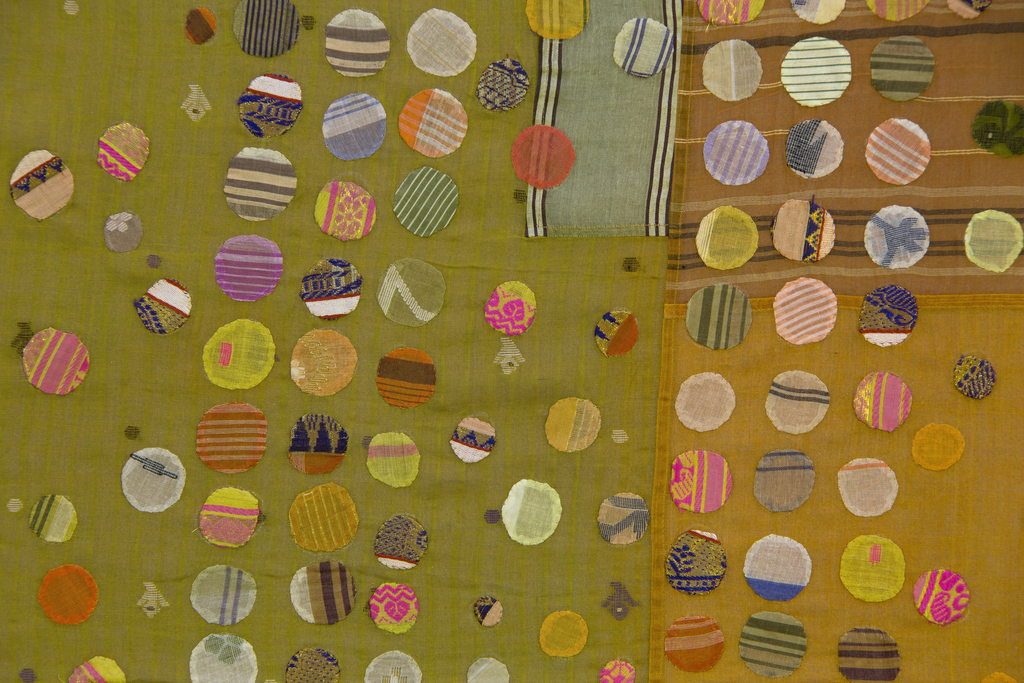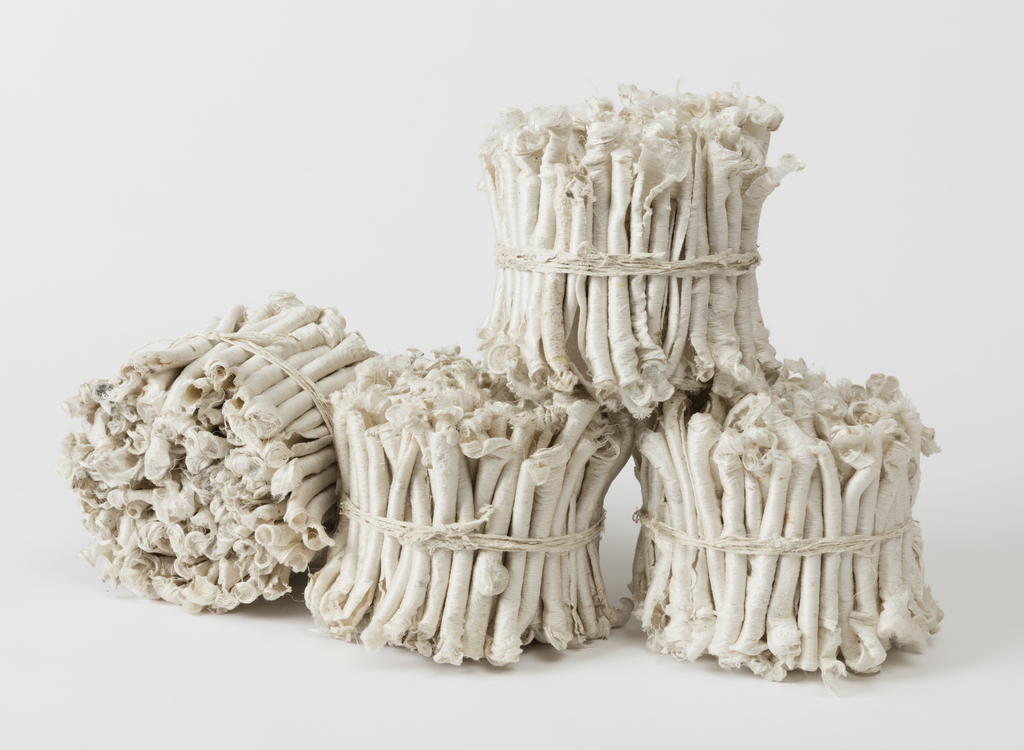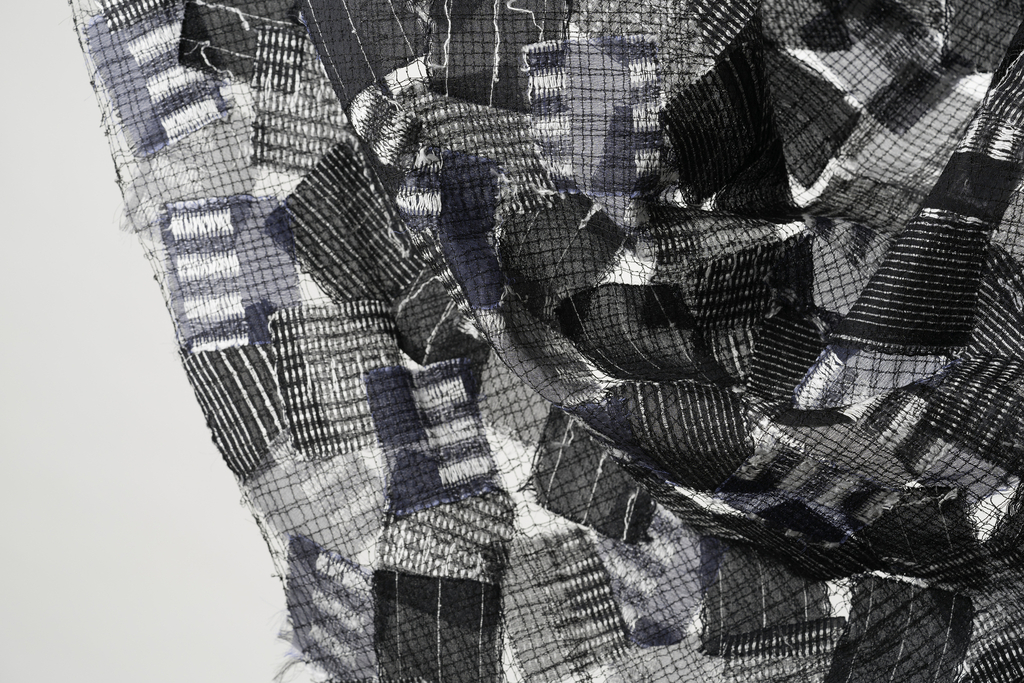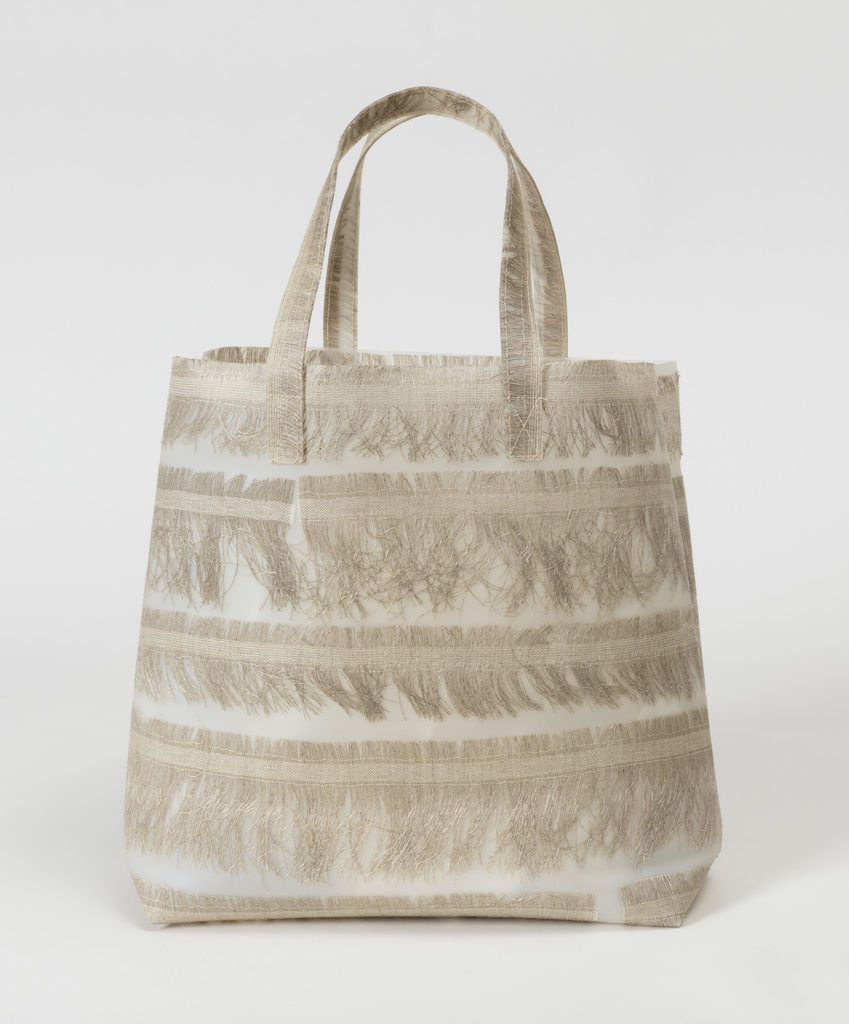Scraps: Fashion, Textiles, and Creative Reuse
After years of crochet, weaving, and sewing projects, I’m all too familiar with the scraps that pile up after each new project. While some of my scraps become rag rugs, patchwork quilts, and scrap yarn blankets, many seem too oddly-shaped or small to reuse. Unfortunately, many textile recycling programs do not accept fabric scraps, and most scraps end up in the trash. In fact, the EPA estimates about 11 million tons of textile waste end up in landfills each year, including everything from useable clothing to fashion and textile industry remnants and my tangled pile of yarn ends. In these low-oxygen environments, textiles can take from 3 months to 40 or more years to biodegrade, and landfill capacities are shrinking at alarming rates. Fortunately, textile recycling is an issue that’s gaining attention, and textile, accessories, and fashion designers are starting a new dialog around waste. The Cooper Hewitt, Smithsonian Design Museum in Manhattan recently opened the ultimate trash-to-treasure exhibition exploring the work of three designers and their unique approaches to textile waste. Scraps: Fashion, Textiles, and Creative Reuse, which runs through April 2017, demonstrates the beauty and innovation achieved when we refuse to design for the dump.
Cooper Hewitt is one of my favorite museums in New York. I often visit museums before starting a new project, and Cooper Hewitt’s electronic pens allow visitors to scan barcodes associated with inspiring objects and access images and information after their visit. I appreciate the hi-tech feel of the many interactive exhibits set within the wood-paneled mansion walls, and love that they often run textile or fashion-related exhibits. The Scraps exhibit inhabits much of the first floor of the museum, and follows each designer’s process from raw material to final product.
Christina Kim, the designer behind dosa inc., sources handmade jamdani saris from India that require hours of skilled work. When designing her collection, Kim found it impossible to dispose of the beautiful woven scraps created during the cut and sew process. Instead of discarding the scraps, she took an upcycled, zero-waste approach by developing a plan to include offcuts into future collections. Larger scraps were patched together to make new cloth while the smallest scraps were appliqued onto other saris to produce unique patterns. With the ultimate goal of using every inch of the original woven cloth, she has created a zero waste process that spans generations of her collections and is founded in respect for the artisans she sources from.
The next artist included in the exhibition is Reiko Sudo, who identified and transformed waste generated during industrial silk manufacturing. While hand-reeled silk uses all of the silk fibers, industrial silk production uses only the finest fibers. As a result, the inner- and outermost layers of the silkworm cocoons are downcycled or discarded.
Sudo decided to collect these manufacturing byproducts and treat them as a quality raw material, designing new processes and technology to create yarn for weaving and a paper-like fiber for gauzy panels. Sudo’s work is an inspiring example of challenging accepted design and manufacturing processes and reimagining waste as a valuable raw material.
Luisa Cevese, the final artist in the exhibition, also transformed waste into a new material, which she uses to make her line of fashion accessories and home textiles. Cevese collects silk threads and the selvedges that are cut from the ends of cloth during the weaving process. She sorts these materials by color, cuts up the larger pieces, and embeds the scraps in polyurethane to create a colorful, durable material. Her process is an example of how we can elevate even the smallest waste materials by combining them with other materials.
I left the exhibition with a newfound appreciation for my thread and fabric scraps, and a respect for the vision, creativity, and determination that goes into incorporating scraps into a zero waste design process. Here are a few tips for reusing and recycling textile waste at home:
- Only buy the supplies you need. This usually requires planning out your project and doing a little math, but can help you avoid buying excess supplies. Know a store’s return policy, keep your receipts, and return materials you don’t need once your project is complete.
- Create a plan for your scraps. Pillow stuffing, patches, and rag rugs are all great ways to reuse your scraps. Once you’ve identified the types of scraps you’ll create as part of your project, check Pinterest for ideas on how to incorporate those scraps into new projects.
- Make do and mend. Once you’ve created a garment, accessory, or home decor item, give it all your love! Embrace the visible mending trend to fix up any wear and tear.
- Upcycle unwanted or stained clothing and textiles. Get creative with the materials you already have, whether they’re old T-shirts you want to turn into T-shirt yarn or overdye faded or stained clothing.
- Recycle at your local farmer’s market or thrift store. New York also offers textile scraps recycling through the re-FashionNYC program, where you can apply for a box for your studio or apartment.
Scraps: Fashion, Textiles, and Creative Reuse is on view at Cooper Hewitt until April 16th, 2017 - don't miss it!



